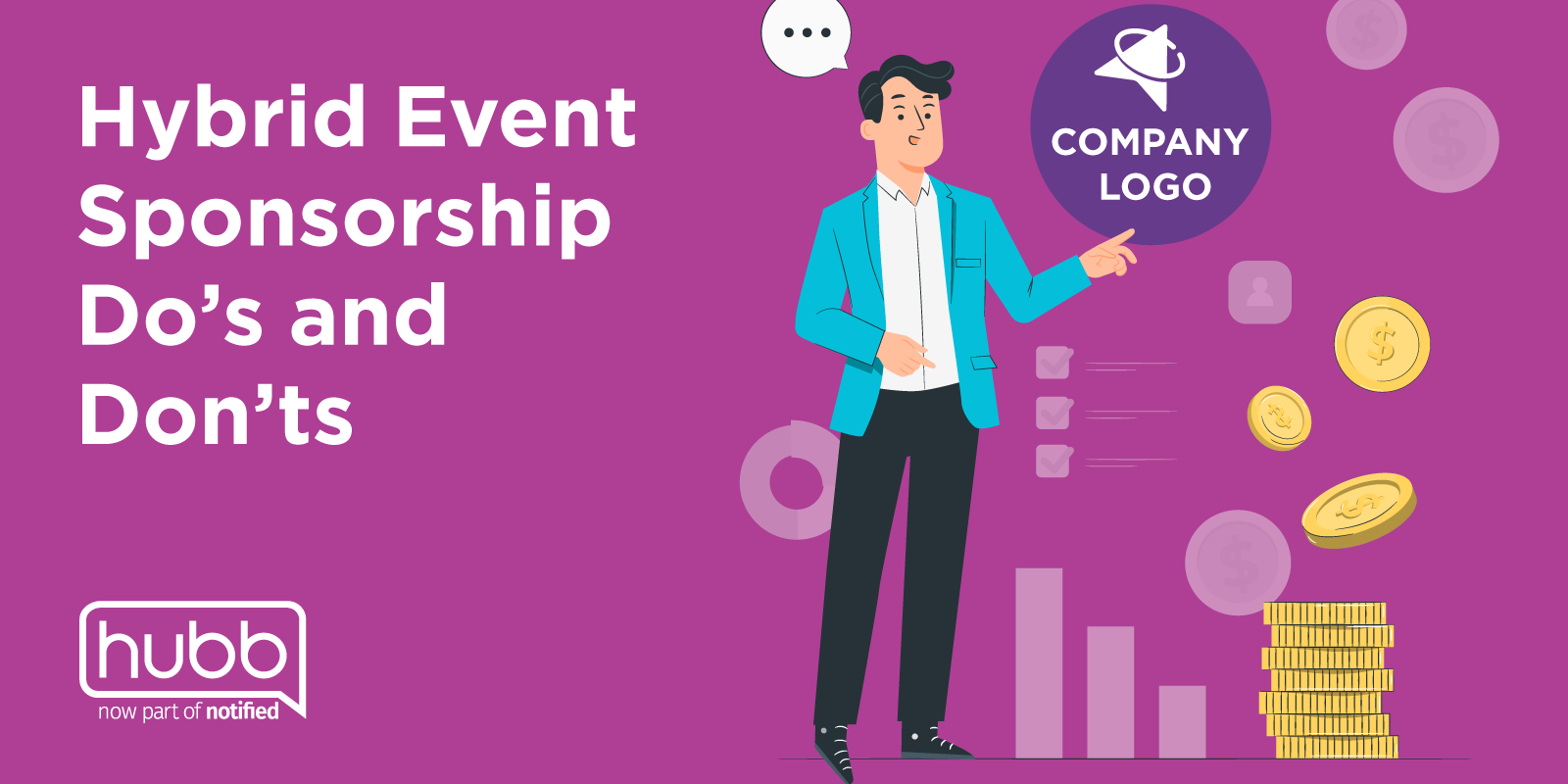Engage, and the sales will follow.
It used to be that we’d look at sponsors with cartoon dollar signs in our eyes. And they didn’t necessarily mind the objectification. As well as we understood our role in event management, they knew their role—event banker—and in exchange, they got to name a room or session at the event, maybe even the event itself; fill swag bags with branded travel mugs and keychains; or have the primo spot at the tradeshow.
Wow, were we all missing the forest for the trees (or for the cute pens handed out at the registration table).
The big picture is that sponsors can give a lot more—and, in turn, get a lot more—if we consider them as participants (with wallets). Of the sponsorships that we have seen work, the best have been the ones where the sponsor participates in the event with the attendees.
That’s not to say that simple brand awareness by interested businesses is a bad thing, but that will never drive business value or generate sales leads. Truly successful sponsors focus on both spreading awareness and improving perception, driving more sales leads, and learning from and responding to attendees.
This post offers some points event managers can keep in mind when approaching sponsors and, ideally, discuss with them. First, we can easily see how sponsorship don’ts earned their whammies—none of them put sponsors, or attendees, on a fulfilling path.
Sponsorship don’ts
There are a lot of things that sponsorship has meant traditionally, but we need to face the fact that while these may be “how things are done” and while they may even be easy to do, they don’t actually lead to a satisfying experience for the sponsor or participants.
- Just sitting at a (virtual or in-person) booth. Humans respond best to other humans, not to furniture, which is what a sponsor becomes if they just sit there, waiting for attendees to approach them. When people do walk up to the booth, these sponsors are likely to just hand out free stuff without engaging in discussion or gathering more information about the attendees—a cardboard cutout holding a basket of pamphlets could do this just as well.
- Hard selling. As bad as the passive approach is overactive, old-school used-car-salesman rabidity. Again, humans like interacting with—and then buying from—other humans, not human-shaped commercials, which come across as just as out of touch and unhelpful as the sponsor sitting quietly in a booth.
- Holding out the ten-foot pole. Sitting still or animatedly barking, at least the sponsor who shows up in person looks or sounds human. The sponsor who sends only product videos and logos is really missing an opportunity. All that says is “Hey! I’m a sponsor!” The last time that kind of exclamation worked was when we were five and trying to explain our Halloween costume.
Sponsorship dos
Instead, we can talk with our sponsors about smart ways they can enhance our events, support our audience with their presence, and return to their home office with genuine connections and targeted sales leads.
- Know before you go.
- Every event is unique. Sponsors and event professionals should talk well in advance about the event’s format (in person, virtual, or hybrid), audience, goals, and specific sponsorship opportunities, etc.
- Sponsor goals may vary based on event. They should think about this before signing up and get as specific as possible.
- Sponsors should identify target personas (companies and/or industries, job titles and/or levels, etc.) and share that with event planners. We need to then respond with a list of registered attendees who fit the bill. Knowing sponsor targets will not only help them with smart lead generation but help us entice prospective attendees who are likely to connect with our event’s sponsors.
- Sponsors should ensure they can provide the people power needed to be interactive at the event.
- Be hands on.
- Sponsors can get involved early to help event planners build the event content and create something memorable (e.g., a unique session format or workshop). They should always be asking themselves, “How do we provide value in this space, in this activity, or with these attendees?”
- Thought leadership sponsorship is a great way to build brand awareness and also build trust that leads to easy sales. At a baseline, sponsors who are also participants attend sessions and chime in on chats. Taking it to the next level is even better: they can be “roving reporters” with GoPros, “interviewing” attendees and reporting out to their wider audience about the event. Since they attended the sessions, they know what was presented and can approach participants not with a sales pitch but with useful follow-up consultations that build on the sessions. The best level is the thought-leadership level, where the sponsor is actually running the session, ideally even created the content and the idea for the session.
There is no one-size-fits-all sponsorship definition; on the other side of the coin, we can’t just expect every idea to equal a great sponsorship. Instead, we can work with sponsors in targeted ways to make their unique sponsorship more successful—for sponsors and participants alike. We’re reimaging what events look like; it’s also time to recast sponsorship.

